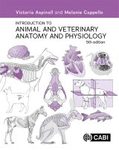About this book
This new edition is a complete re-write of the 1st edition, published in 1993 (editors Lawrence and Rushen).
Abnormal behaviour patterns, from the jumping and somersaulting of caged laboratory mice to the pacing of enclosed 'big cats', are displayed by many millions of farm, zoo, research and companion animals. Including new chapters and over 30 contributors, this book focuses on the causation and treatment of these environment-induced stereotypic behaviours, and their implications for animal welfare and normalcy of brain functioning.
The book begins by taking an ethological perspective, focusing on the constraints captivity places on animals' normal behavioural repertoires, and the effects these have on specific motivational systems. It then addresses the role of dysfunction, particularly the impact of chronic stress and impoverished environments on brain functioning. The book then moves on to explore how stereotypic behaviours can be tackled, once they have emerged, using diverse techniques from environmental enrichment to pharmaceutical intervention. It concludes by giving a new definition for 'stereotypic behaviour', and a discussion of future research directions.
Contents
* Introduction: A decade-or-more's more progress in understanding stereotypies, J Rushen and G Mason; Part 1: Normal Animal, Abnormal Environment?; * Stereotypic oral behaviour in captive unguates: Foraging, diet and gastro-intestinal function, R Bergeron, A Badnell-Waters, Equine Consultancy Services, UK, S Lambton, University of Bristol, UK, and G Mason; * Locomotory stereotypies in carnivores: does pacing stem from hunting, ranging or frustrated escape? R Clubb, Care for the Wild International, UK, and S Vickery, Department for Environment, Food and Rural Affairs, UK; * The motivational basis of caged rodents' stereotypies, H Wurbel, Justus-Liebig-Universitat Giessen, Germany; Part 2: Stereotypies as Pathologies; * Perseveration and Stereotypy - Systems-Level Insights from Clinical Psychology, J Garner, Purdue University, USA; * Social deprivation and social separation: Developmental insights from primatology, M A Novak, J S Meyer, University of Massachusetts, USA, C Lutz and S Tiefenbacher, New England Primate Research Center, USA; * The Neurobiology of Stereotypy I: Environmental Complexity, M H Lewis, M F Presti, University of Florida, USA, J B Lewis, New College of Florida, USA, and C A Turner, University of Michigan, USA; * The Neurophysiology of Stereotypy II - The Role of Stress, S Cabib, Universita "La Sapienza", Italy; Part 3: Treating Stereotypies; * Environmental enrichment as a strategy for mitigating stereotypies in zoo animals: a literature review and meta-analysis, R Swaisgood, Center for Reproduction of Endangered Species, San Diego, USA, and D Shepherdson, Oregon Zoo, USA; * Veterinary and pharmacological approaches to abnormal repetitive behaviour, D Mills, University of Lincoln, UK, and A Luescher, Purdue University, USA; Part 4: In Conclusion; * Stereotypies in captive animals: Fundamentals and implications for animal welfare, G Mason.
Customer Reviews



































